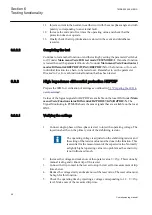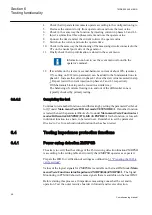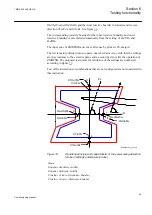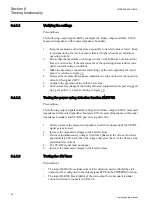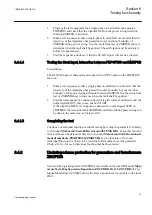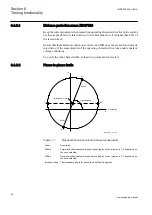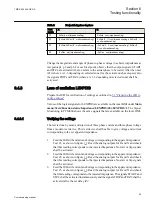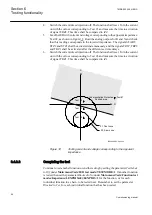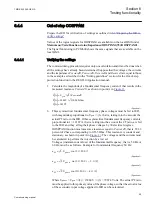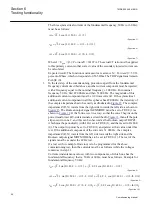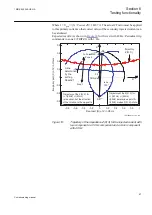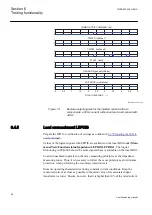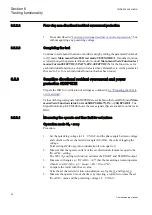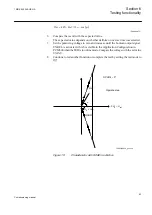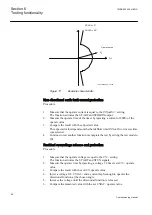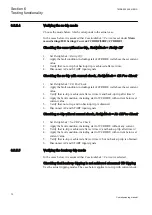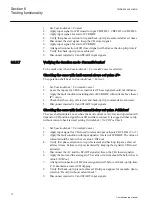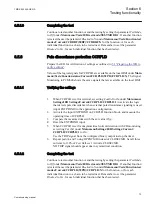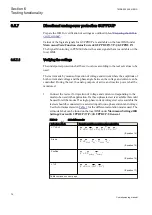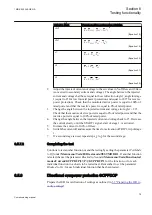
Connect the symmetrical three-phase injection current into phases L1, L2 and
L3.
2.
Connect the test set for the appropriate three-phase voltage injection to the IED
phases L1, L2 and L3. The protection shall be fed with a symmetrical three-
phase voltage.
3.
Set the injected polarizing voltage slightly larger than the set minimum
polarizing voltage (default is 5% of
UBase
) and set the injection current to lag
the appropriate voltage by an angle of 55° if forward directional function is
selected.
If
1 out of 3
currents for operation is chosen: The voltage angle of phase L1 is the
reference.
If reverse directional function is selected, set the injection current to lag the
polarizing voltage by an angle equal to 235° (equal to 55° + 180°).
4.
Increase the injected current and note the operate value of the tested step of the
function.
5.
Decrease the current slowly and note the reset value.
6.
If the test has been performed by injection of current in phase L1, repeat the test,
injecting current into phases L2 and L3 with polarizing voltage connected to
phases L2, respectively L3 (
1 out of 3
currents for operation).
7.
If the test has been performed by injection of current in phases L1 – L2, repeat
the test, injecting current into phases L2 – L3 and L3 – L1 with the appropriate
phase angle of injected currents.
8.
Block higher set stages when testing lower set stages by following the procedure
described below.
9.
Connect a trip output contact to a timer.
10. Set the injected current to 200% of the operate level of the tested stage, switch
on the current and check the time delay.
For inverse time curves, check the operate time at a current equal to 110% of the
operate current for
txMin
.
11. Check that all trip and start contacts operate according to the configuration
(signal matrixes)
12. Reverse the direction of the injected current and check that the protection does
not operate.
13. Repeat the above described tests for the higher set stages.
14. Finally check that start and trip information is stored in the event menu.
Verification of the non-directional phase overcurrent function is
done as instructed above, without applying any polarizing
voltage.
6.5.1.2
Completing the test
Continue to test another function or end the testing by setting the parameter
TestMode
to
Off
under
Main menu/Tests/IED test mode/TESTMODE:1
. If another function
is tested, then set the parameter
Blocked
to
No
under
Main menu/Tests/Function test
modes/Current/OC4PTOC(51_67,4I>)/OC4PTOC:1
for the function, or for each
Section 6
1MRK 502 049-UEN A
Testing functionality
60
Commissioning manual

